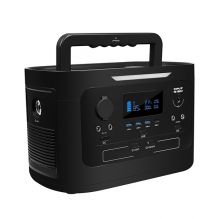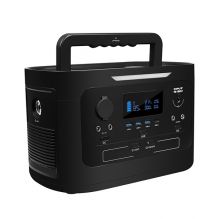News
Site Editor
 Site
/uploads/image/61e7a5cca4d32.png
Portable power stations have become indispensable for outdoor enthusiasts, emergency preparedness, and off-grid living.
Site
/uploads/image/61e7a5cca4d32.png
Portable power stations have become indispensable for outdoor enthusiasts, emergency preparedness, and off-grid living.
How to Safely Use and Maintain Your Portable Power Station
Views: 1015
Author: Site Editor
Publish Time: 2024-05-30
Origin: Site
Portable power stations have become indispensable for outdoor enthusiasts, emergency preparedness, and off-grid living. To ensure optimal performance, safety, and longevity of your portable power station, follow these guidelines for safe usage and maintenance:
1. Read the User Manual
Before using your portable power station, carefully read the user manual provided by the manufacturer. Familiarize yourself with its features, specifications, and safety instructions.
2. Charge Properly
Use the Recommended Charger: Only use the charger provided by the manufacturer or a compatible charger recommended in the user manual. Using improper chargers can damage the battery or cause safety hazards.
Avoid Overcharging: Do not leave the portable power station connected to the charger for extended periods once it is fully charged. Overcharging can degrade battery performance and shorten its lifespan.
Monitor Charging: Regularly check the charging progress and disconnect the charger once the battery is fully charged to prevent overcharging.
3. Operating Environment
Temperature: Operate the portable power station within the specified temperature range provided by the manufacturer. Avoid exposing it to extreme temperatures, as it can affect battery performance.
Ventilation: Ensure proper ventilation around the power station during operation to prevent overheating. Avoid covering or blocking the ventilation openings.
4. Load Management
Do Not Exceed Capacity: Avoid connecting devices that draw more power than the maximum capacity of the power station. Exceeding the rated capacity can damage the battery or overload the power station.
Spread the Load: Distribute the power consumption evenly across the outlets to prevent overloading individual ports.
5. Storage and Transportation
Charge Before Storage: Before storing the portable power station for an extended period, ensure it is fully charged. Partially charged batteries are susceptible to self-discharge and may lose capacity over time.
Store in a Cool, Dry Place: Store the power station in a cool, dry location away from direct sunlight, moisture, and extreme temperatures. Avoid storing it in a hot car or damp environment.

6. Maintenance
Regular Inspection: Periodically inspect the power station for any signs of damage, wear, or corrosion. Check the cables, connectors, and outlets for loose connections or physical damage.
Cleanliness: Keep the exterior of the power station clean and free from dust, dirt, or debris. Use a soft, dry cloth to wipe away any contaminants.
Firmware Updates: If the portable power station has firmware or software, ensure it is up-to-date by installing any available updates provided by the manufacturer.
7. Safety Precautions
Avoid Water Exposure: Keep the power station away from water or moisture to prevent electrical shorts or damage to internal components.
Unplug Unused Devices: When not in use, unplug devices from the power station to prevent accidental discharges or power surges.
Use Surge Protectors: Consider using surge protectors or power strips with built-in surge protection when connecting sensitive electronics to the power station.
8. Dispose of Properly
Battery Recycling: When the portable power station reaches the end of its life, dispose of it according to local regulations for battery recycling. Many regions have designated recycling centers for proper disposal.
By following these guidelines for safe usage and maintenance, you can maximize the performance, safety, and lifespan of your portable power station. Proper care and attention will ensure that your power station remains a reliable source of power for your outdoor adventures, emergencies, or off-grid living needs. Always prioritize safety and adhere to the manufacturer's instructions for the best results.
